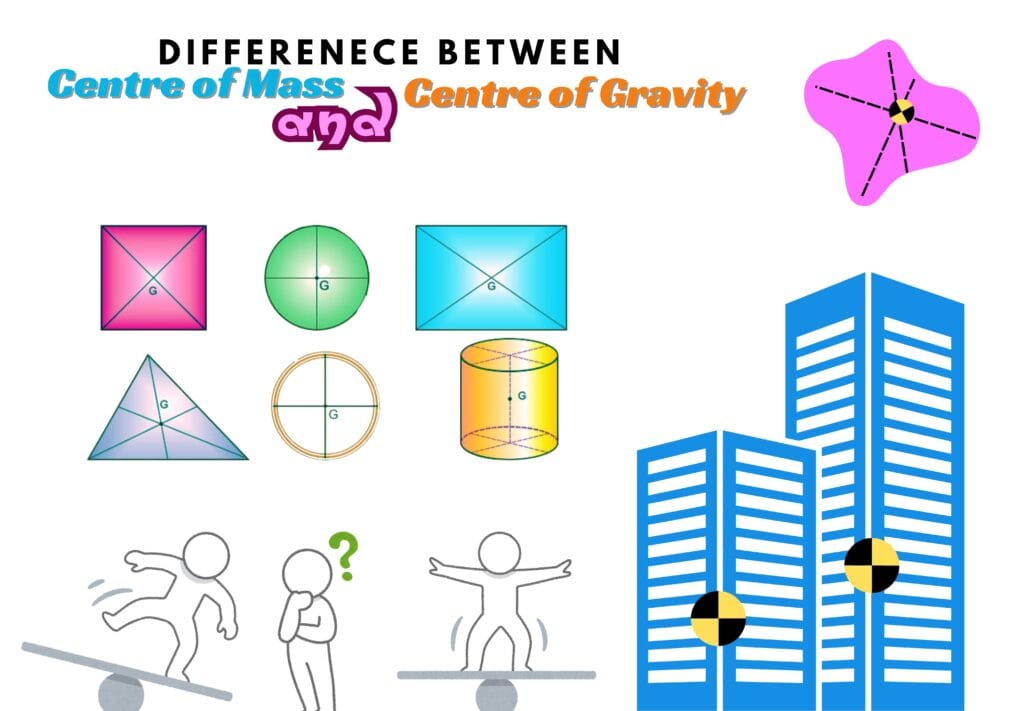Difference of centre of mass vs centre of gravity is important mostly in the field of structures and from the literature perspective.
Table of Contents
Introduction
While both the centre of mass and the centre of gravity refer to points in an object where its mass is effectively concentrated, the key difference lies in the influence of gravity.
Whether it is an elderly man walking with the help of a stick, a toddler who just learned to walk, the book on a desk, or the moving cars on the road, all are either in a state of stability or unstable.
We might not immediately realise this but it is due to the concepts of Centre of Mass (CoM) and/or Centre of Gravity (CoG) which play a vital role in stability.
These two terms might sound complicated and confusing, but in reality, they are really simple theoretical concepts. They have a significant influence on how we interact with our surroundings every day.
They only become a bit complicated once the determination of these points comes into consideration for an irregular or asymmetrical-shaped body.
The Centre of Mass: What is it?
The Centre of Mass (CoM) of an object is defined as,
“the point of an object or a body where all of its mass can be considered to be concentrated.”
Key Characteristics of CoM
- It moves with the object.
- It does not have to be within the object.
- The symmetry of objects makes the determination of CoM easier.
Location of Centre of Mass
The Centre of Mass is located at an average location of the mass of an object under consideration. This point is crucial for understanding how objects move and behave when forces are applied to them.
If the force is applied at the centre of mass, it will only show a translation effect. However, if the force is applied on either side of the CoM, it will show either rotation or translation and rotation both.
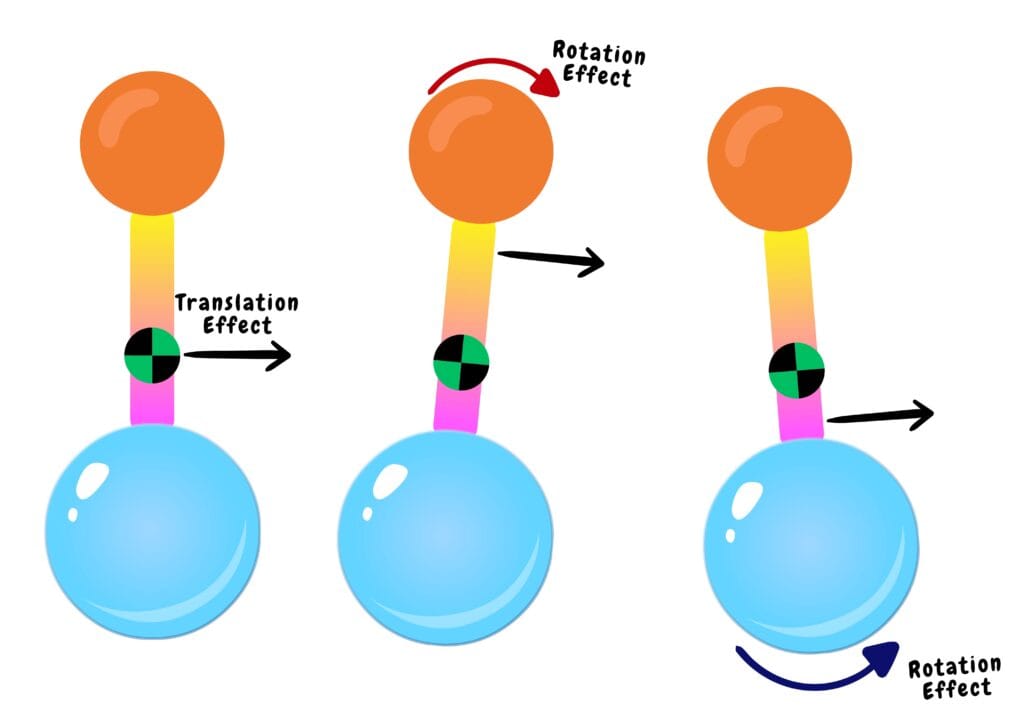
For regular or symmetrical objects, the CoM is at the centre, but for irregular or asymmetrical objects like a vehicle, it can be anywhere depending on its shape.
Finding the Centre of Mass
For simpler objects, like a straight stick or a uniform disk, the CoM is at the geometric centre.
For more complex shapes, the CoM might need to be calculated by taking into account how the mass is distributed throughout the object.
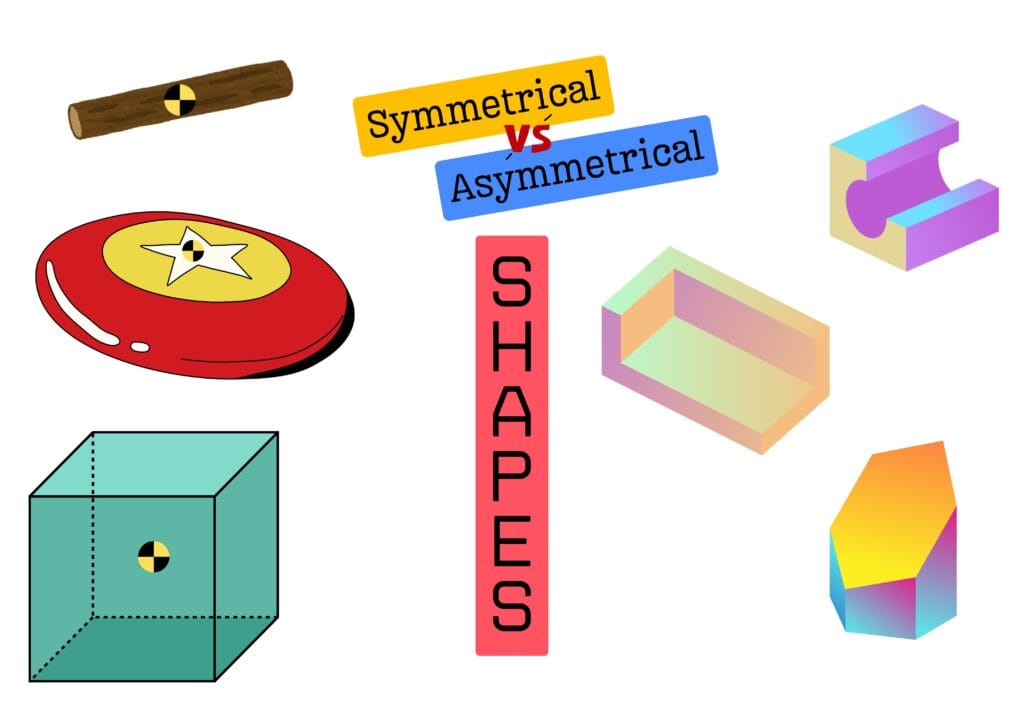
Centre of Mass in Action
In everyday life, the Centre of Mass is always at work, whether we realise it or not.
The Elderly Man and His Stick
As mentioned, the elderly man uses a walking stick to help him maintain balance. This is because the stick helps shift the centre of mass of his body to a more stable position.
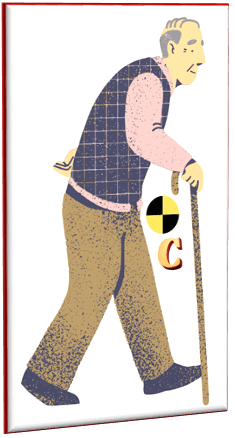
The walking stick adds an external support point that stabilises his body by lowering the CoM. It provides a broader base of support. Without it, his body may feel top-heavy, especially if his muscles have weakened with age.
The Centre of Gravity: What is it?
The Centre of Gravity (CoG) of an object is defined as,
“the point on an object or a body where the gravitational force is acting upon.”
Key Characteristics of CoG
- It is influenced by gravity.
- Higher CoG leads to instability.
- It aligns with the CoM in uniform fields.
Location of Centre of Gravity
It is similar to the CoM but with an important distinction: the CoG depends on gravity, while the CoM does not.
- In a uniform gravitational field, like on Earth, the CoM and CoG are at the same point.
- For a non-uniform gravitational field, like in space, they can be different as CoG considers gravity as well.
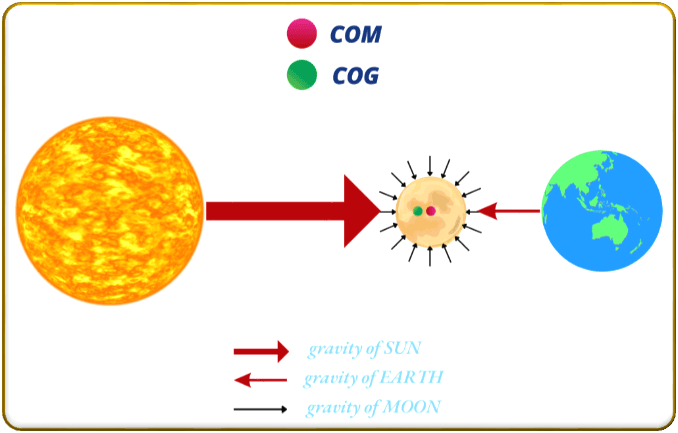
Finding the Centre of Gravity
For a symmetrical body, the centre of mass and the centre of gravity are alike in a uniform gravitational field, meaning at the geometric centre.
Determination of CoG of an Irregular-Shaped Thin Lamina Using Plumbline
CoG of an asymmetrical object can be found by using a plumbline. For a simple arrangement take a cardboard, plumbline,anda paper piercer.
Plumbline
A plumbline is a tool, consisting of a small metal bob (made of lead or brass) and supported by a string. In a freely suspended state, the string rests along the vertical direction due to its weight.
In this state, the CoG of the bob is exactly below its point of suspension.
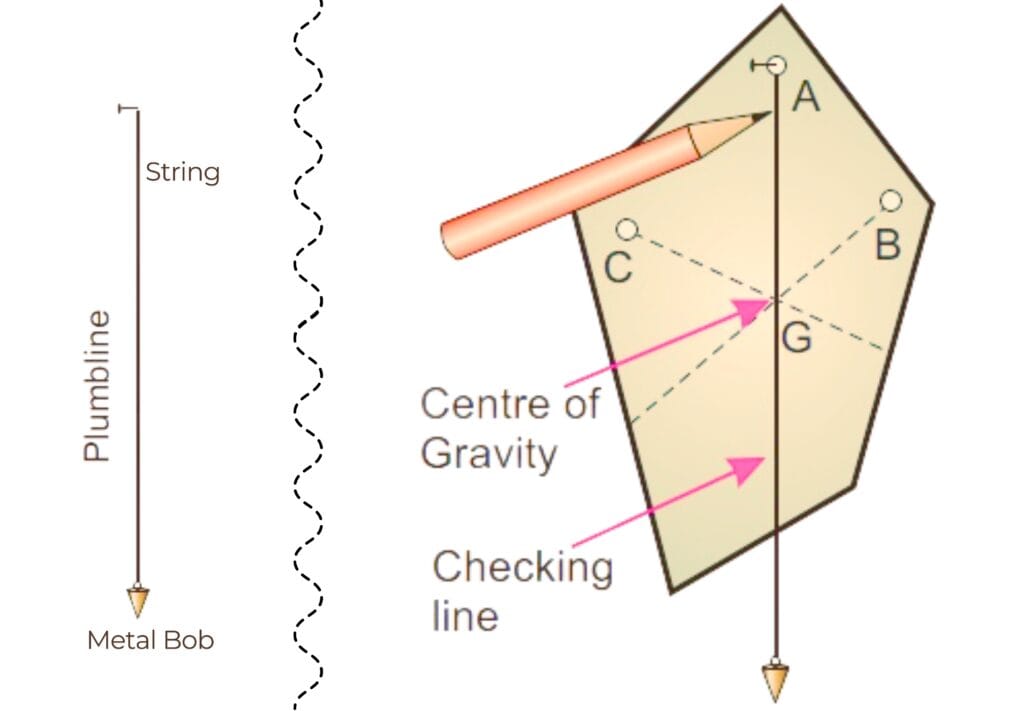
Working
1. Pierce three holes (A, B, and C) on the cardboard (as shown).
2. Hang a plumbline through these points.
3. Draw the line when the string of plumbline is in a freely suspended state.
4. The intersection of the lines is the CoG of the irregular lamina.
Centre of Gravity in Action
The CoG plays a huge role in determining how objects react to tilting forces.
The Toddler Learning to Walk
When a toddler is learning to walk, they have to figure out how to balance their body. This control of the body is related to the manipulation of CoG.
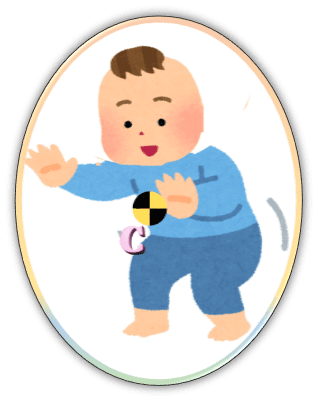
The CoG of a toddler is higher due to their shorter limbs and a less developed sense of balance. This makes it harder for him to stay upright.
Over time, as they gain strength and coordination, they learn to adjust their body movements to keep their CoG over their feet. This understanding allows them to walk more easily on the ground.
Difference of Centre of Mass vs Centre of Gravity
Here is a quick comparison between the Centre of Mass vs the Centre of Gravity.
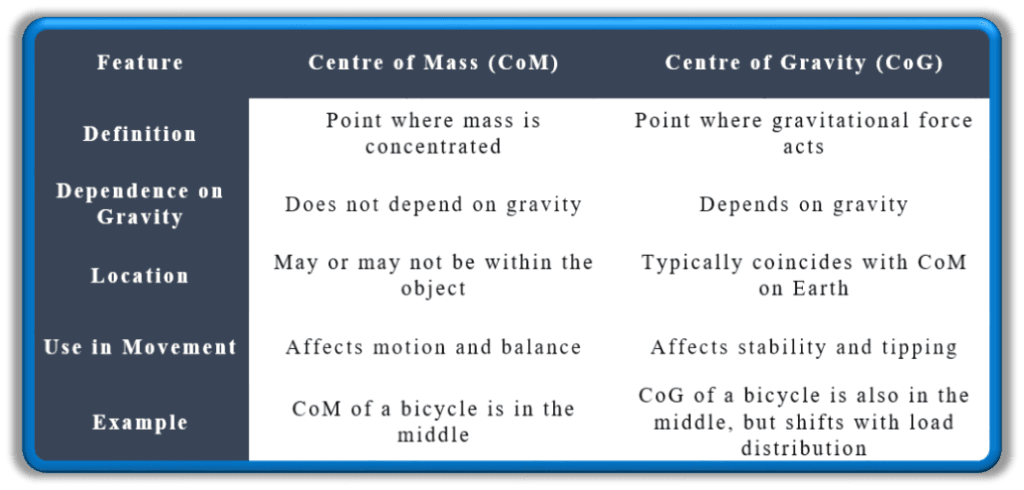
The Role of Centre of Mass and Centre of Gravity in Stability
Whether we are standing on one leg or balancing a spoon on our finger, stability is key to preventing topples and falls.
Stability and Balance
If an object resists tipping over when a force is applied to it, this is referred to as stability and the object is said to be in a balanced state. This is determined by the location of the CoG of the object.
If the CoG is low and near the centre of the base, the object is less likely to tip over. If the CoG is high or outside the base, the object becomes more unstable.
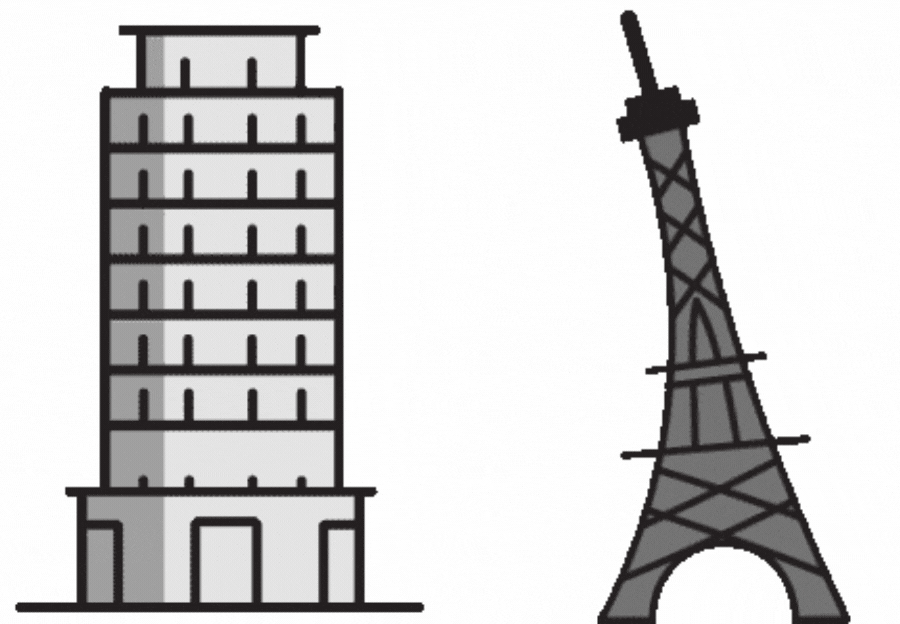
Conditions for Stability
For an object to be stable, the following conditions must be met:
- The CoG must be located above the base of support.
- The base of support must be wide enough to prevent tipping.
- The object must have a low CoG, as a higher CoG leads to greater instability.
- The heavy bottoms object tends to be more stable than the one with light bottoms.
Everyday Examples of Stability
- Cars: Cars are designed with a low CoG, so they do not tip over easily during turns. That is why sports cars, with a lower body, tend to be more stable at high speeds than taller vehicles like SUVs.
- Skateboards and Bikes: When riding a skateboard or bike, your body shifts to keep the CoM aligned with the board or bike. This helps you balance and steer.
Conclusion
From the sports we play to the objects we interact with daily, the concepts of CoM and CoG are always at work in the background. Whether we are balancing a pencil on our finger or watching a building sway in the wind, understanding how these concepts relate to stability and balance is crucial.
So, the next time you see something teetering on the edge of balancing perfectly, you will know it is all thanks to the clever interplay between CoM, CoG, and stability.
Frequently Asked Questions (FAQs)
What is the Centre of Mass (CoM)?
The Centre of Mass is the point in an object where its entire mass can be considered to be concentrated for analysing motion and forces.
What is the Centre of Gravity (CoG)?
The Centre of Gravity is the point in an object where the gravitational force acts, determining how the object interacts with gravity.
Are the Centre of Mass and Centre of Gravity always the same?
In a uniform gravitational field (like on Earth), they coincide. In a non-uniform gravitational field, they may differ because the CoG considers variations in gravitational force.
How is the location of the CoM determined?
The CoM is found by averaging the positions of all the mass in an object, weighted by their mass values. For symmetrical objects, it’s typically at the geometric center.
How can the CoG of an irregular object be determined?
Using a plumbline, we can find the CoG by suspending the object from different points and marking the vertical lines. The intersection of these lines is the CoG.
What are the key differences between CoM and CoG?
- CoM is a mass-related concept and independent of gravity.
- CoG depends on gravity and can shift in a non-uniform gravitational field.
How does CoM influence motion?
Forces acting through the CoM cause linear motion, while forces away from the CoM can induce rotation.
Why is a lower CoG important for stability?
A low CoG makes an object less prone to tipping because it keeps the gravitational force closer to the base of support.
Can the CoM or CoG be located outside the object?
Yes, especially for hollow or irregularly shaped objects. For example, the CoM of a ring lies at its center, where there is no material.
What are some practical examples of CoM and CoG in daily life?
- Cars: Designed with a low CoG to prevent tipping during turns.
- Walking stick: Lowers the CoM for an elderly person, improving stability.
- Sports: Athletes adjust their body movements to manage their CoG for balance.

